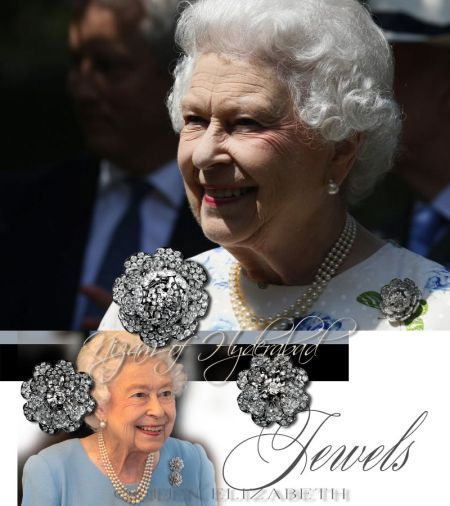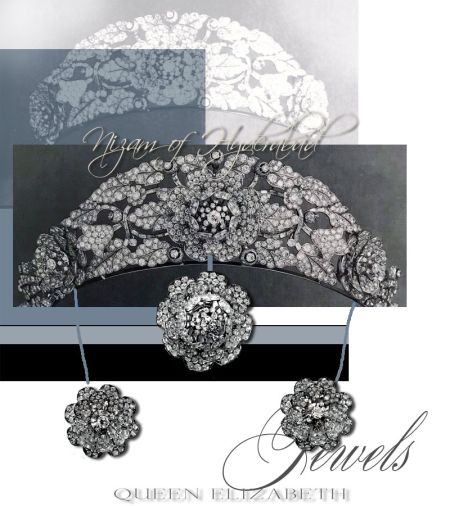THE VANDERBILT FAMILY JEWELS Jewels of Gladys Vanderbilt Countess Széchenyi




Gladys Moore Vanderbilt’s Cartier Diamond and Amethyst Tiara – and its Surviving Fragment
When Gladys Moore Vanderbilt (1886–1965), the youngest daughter of Cornelius Vanderbilt II and Alice Gwynne Vanderbilt, married Count László Széchényi of Hungary in 1908, her wedding became one of the most celebrated unions of the Gilded Age. To mark this transatlantic marriage, Alice Vanderbilt commissioned Cartier to create a magnificent diamond and amethyst tiara in the Belle Époque style.
The jewel was conceived as eight delicate sprays of lilies, rising gracefully above the bandeau, each set with old-cut diamonds. The innovative design allowed for interchangeable drops: either pear-shaped amethysts or similarly shaped diamonds could be suspended from the sprays, altering the tiara’s appearance according to occasion and fashion.
This tiara was more than a personal adornment; it symbolised the Vanderbilt family’s ambition and their determination to translate American industrial wealth into European aristocratic prestige. Gladys, one of the last of the great American heiresses of her generation, embodied this transfer of fortune and status across the Atlantic.
In the years that followed, the tiara was eventually dismantled-a fate not uncommon among great jewels of the period, as changing styles and inheritance divided once-cohesive parures into smaller, wearable pieces. Yet fragments survived, carrying with them echoes of their original splendour.
One such surviving jewel has now resurfaced: a Cartier diamond brooch, designed as a single lily spray, set with an old-cut pear-shaped diamond weighing 4.55 carats. Originally part of Gladys Vanderbilt’s tiara, the brooch retains the elegance of Cartier’s Belle Époque craftsmanship and stands as a rare tangible relic of the Vanderbilt legacy.
In November 2025, this brooch will be offered at auction in Geneva. Its reappearance not only revives the story of Gladys Vanderbilt’s celebrated wedding gift but also highlights the enduring allure of jewels that once served as instruments of social power, familial aspiration, and transatlantic identity.
In March 1912, Countess Széchenyi’s jewelries worth $200,000 ($8 million today) was stolen from her town residence in Budapest, the detective afterward found the jewels in a motor car garage, where they had been hidden by being wrapped in a piece of newspaper behind a barrel.
The tiara was divided between her children:
Countess Cornelia „Gilia“ Széchényi de Sárvár-Felsövidék 1908–1958 Eugene Bowie Roberts 1898–1983
Countess Alice „Ai“ Széchényi de Sárvár-Felsövidék 1911–1974 Countess Béla Hadik
Countess Gladys Széchényi de Sárvár-Felsövidé 1913–1978, Countess Winchilsea Nottinham |Viscountess Maidstone, Finch Hatton
Countess Sylvia Anita Gabriel Denise Irene Marie „Sylvie“ Széchényi de Sárvár-Felsövidék 1918–1998 Countess Antal Szapáry von Muraszombath Széchysziget und Szapar
Countess Ferdinandine „Bubby“ Széchényi de Sárvár-Felsövidék 1923–2016 Countess Alexander E. Eltz
Gladys Vanderbilt Wedding Jewels| Countess Gladys Szechenyi | Important large Diamond of 62,09ct Diamond Necklace |Imperial-Royal Austria Hungary Jewel History
Cartier Diamond Choker |Gladys Vanderbilt Wedding Jewels| Countess Gladys Szechenyi | |Imperial-Royal Austria Hungary Jewel History
Cartier Diamond Garland Diadem Tiara with Amethysts |Gladys Vanderbilt Wedding Jewels| Countess Gladys Szechenyi |Imperial-Royal Austria Hungary Amethyst Jewel History
Amethyst Garland Diadem Gladys Vanderbilt Gräfin Szechenyi | Prachtvolle Hochzeit und Juwelen und Schmuck als Hochzeitsgeschenke
Cartier Diamond Garland Tiara with Amethysts|Gladys Vanderbilt Wedding Jewels| Countess Gladys Szechenyi |Imperial-Royal Austria Hungary Amethyst Jewel History
Through her eldest daughter, Cornelia, she was the grandmother of three – Gladys Vanderbilt Roberts (b. 1934), Cornelia Roberts (1936–1982), who married Count Hans-Heinrich von Coudenhove-Kalergi (1926–2004), and Eugene Bowie Roberts, Jr. (1939–2020).
Through her daughter Alice, she was grandmother to Count László Hadik von Futak (1932–1973) and Count János Hadik von Futak (1933–2004).
Through her daughter Gladys, she was the grandmother of Christopher Denys Stormont Finch-Hatton, the 16th Earl of Winchilsea (1936–1999) and the Hon. Robin Finch-Hatton (1939–2018).
Through her daughter Sylvia, she was the grandmother of Count Pál László Szapáry (b. 1950) and Countess Gladys Vanderbilt Szapáry (b. 1952).
Through her youngest child, Ferdinandine, she was the grandmother of Count Peter von und zu Eltz (b.1948) and Count Nicholas (Nicky) von und zu Eltz (1950–2012)










